

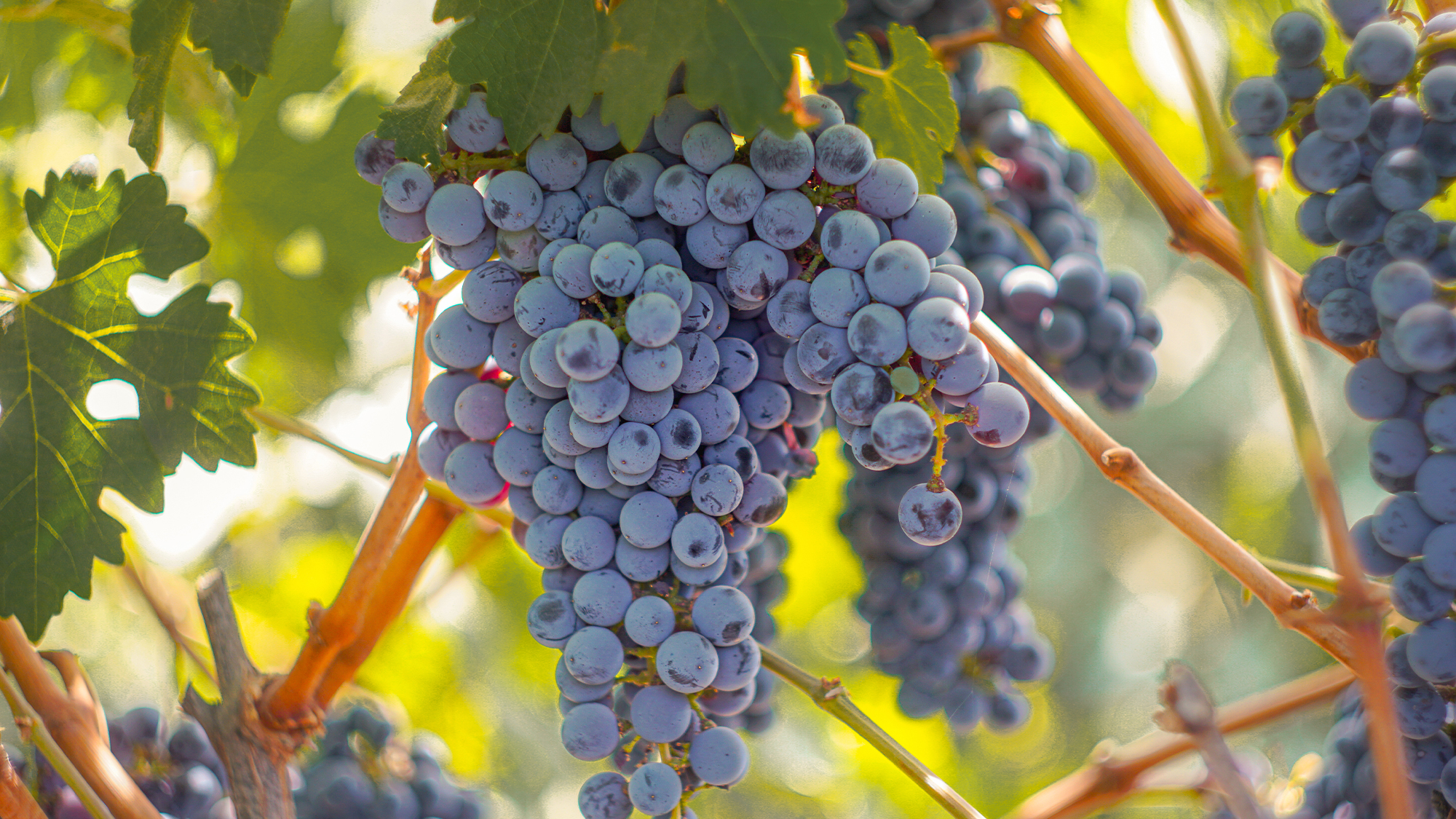
Traditionally blended in wines across southwestern France, Cabernet Sauvignon is primarily known for its role in the prestigious wines of the Left Bank of Bordeaux. Now, the esteemed grape is grown all over the world, where we see winemakers focus more on single-varietal expressions.
This year, we were impressed by the range of unique bottlings coming from across the U.S. — from the earthy, juicy Cabernet Sauvignons from mountains, hills, benches, and slopes of Northern California to the powerful and savory wines of the Pacific Northwest. Even the cooler-climate regions within New York State offer impressive Cabs, showing the grape’s leaner, elegant side, while still maintaining depth and character.
These days, more wine drinkers are embracing high-toned reds, so the spectrum of Cabernet Sauvignon expressions on offer has greatly widened. We tasted hundreds of wines from around the world and these are the bottles that blew our minds. Read on to discover the best Cabernet Sauvignons to drink in 2025
Every year, VinePair conducts dozens of tastings for our “Buy This Booze” product roundups, highlighting the best bottles across the world’s most popular wine and spirits categories.
Within this scope, VinePair’s tasting and editorial staff samples thousands of bottles every year. This ensures we have a close eye on what’s new and exciting. Crucially, it also provides us with the context needed to distinguish the simply good from the truly great, whether from a quality or value-for-money perspective — or both.
Ultimately, our mission is to offer a clear, reliable source of information for drinkers, providing an overview applicable to day-to-day buying and drinking. Learn more about VinePair’s tastings and reviews department here.
We believe in tasting all products as our readers typically would: with full knowledge of the producer and — importantly — price. Our tastings are therefore not conducted blind.
VinePair’s tasting panel evaluates every wine on its aromas, flavors, structure, balance, and quality. We also consider whether or not the wine showed typicity for its specific grape or region.
In order to provide our readers with the most comprehensive and thoroughly tested list of the best Cabernet Sauvignons to buy, VinePair invited producers, distributors, and PR firms working on their behalf to send samples for consideration. These bottles were submitted free of charge — producers didn’t pay to submit nor did VinePair pay for the products. All were requested with the clear understanding that submission does not guarantee inclusion in the final list.
For the Cabernet Sauvignon roundup, we assigned a score to each product on a 100-point scale based on the quality and intensity of its aromas, flavors, texture, and finish. Then we reviewed all scores and compiled an editorially driven list that meets our criteria of best Cabernet Sauvignons to buy right now. Each wine was assessed on quality, price, and availability to compile the final list.
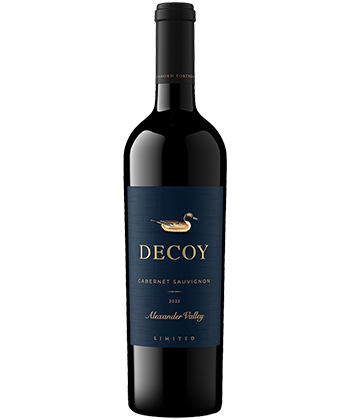
In Bordeaux they call them second labels. In Burgundy and the Rhône Valley they’re called village wines. These are the lower-priced bottlings from famous properties. In the U.S. we don’t have laws that define a “second label” but Duckhorn is giving that kind of energy with their various projects across America’s wine regions
The Decoy label fits comfortably into the idea of a second label. In the mid-’80s Duckhorn launched Decoy to make high-quality wines at a lower price point. In 2018, the brand launched the Decoy Limited series with the same ethos, but showcasing wines made from some of California’s most celebrated vineyards.
This is their Alexander Valley Cabernet, and to say it punches above its weight would be an understatement. It’s one of the most quality-driven examples of this variety at this price. The nose screams “California Cab” with juicy dark fruits and slight hints of pepper. The palate is very balanced and has a nice depth of fruit while still delivering subtle notes of pepper and spice.
Average Price: $30
Rating: 92
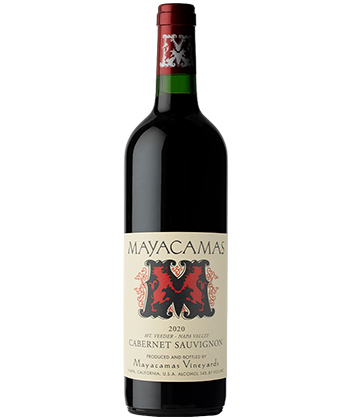
Perched on the mountain range it’s named after, Mayacamas Vineyards has a long history in the Napa Valley. It all started in the late 19th century when the estate was named Fisher and Sons and planted to the Zinfandel grape. Over the years it changed hands in the ’40s to Jack and Mary Taylor, who gave it its current name and improved the property’s facilities and planted the first vines of Cabernet Sauvignon and Chardonnay. It was in the late ’60s, when Bob and Eleanor Travers took the helm, that the wines of Mayacamas Vineyards were recognized in the 1976 Judgement of Paris. To say this winery is still thriving today would be an understatement.
This wine continues to floor us vintage after vintage. We ranked it No. 1 on our list of The 50 Best Wines of 2018 and we awarded the 2019 vintage 99 points. The current vintage is equally impressive. It is a representation of the past, present, and future of Cabernet Sauvignon in the Napa Valley. It shows the elegance and restraint of the ’70s and ’80s, the power and depth of the ’90s and early aughts along with the bright fruit preferred today lifted by lively natural acidity.
This wine offers the powerful tannic frame of a Cab, while maintaining restraint and elegance. The fruit has depth but still shows brightness. The palate is somewhat weighty but with a perfect harmony between all the major elements. It has more tannin than 2019 but is just as wonderful — a perfect representation of the legacy of Napa and especially the high-elevation vineyards of Mount Veeder.
Average Price: $185
Rating: 99
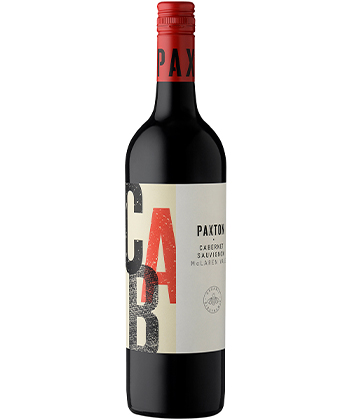
Paxton’s CAB bottling is a blend of the estate’s premium vineyards in South Australia’s McLaren Vale region, the Thomas Block and Jones Block, which are both organically and biodynamically farmed. It opens with leafy earth on the nose with a slight hint of soy sauce. The palate has medium weight with wild berries and bright acidity.
Average Price: $23
Rating: 91

Fox Run winemaker and New Jersey native Craig Hosbach, along with assistant winemaker Angelica Lawler, can’t seem to stop impressing us here at VinePair. From their Lemberger and Cabernet Franc to their excellent single-vineyard Chardonnay, we just can’t get enough. And here we are with Cabernet Sauvignon from the cool climate Finger Lakes region. It’s lean and balanced with good grip and some nice viscosity. The palate brings red and blue fruit with a hint of dried herbs.
Average Price: $25
Rating: 90
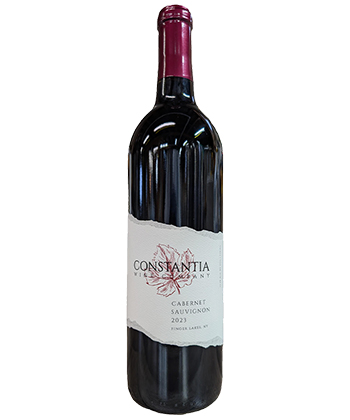
Cabernet Sauvignon doesn’t typically thrive in cool-climate regions. That’s why it’s so impressive that Constantia coaxes out such a deep expression of the variety in the Finger Lakes. The grapes are sourced from a high-density vineyard on the eastern shore of Cayuga Lake on calcareous soils. The nose is subtle with dried wild berry aromas, but the palate is all about texture. The tannins are soft yet present and the depth is just right. It’s a structural success.
Average Price: $29
Rating: 90

When Bob Palmer bought some gravelly farmland in 1983 and decided to plant a vineyard, he became one of Long Island’s wine pioneers. Today the winery is run by the Massoud family who maintain his legacy. This is a delicious, well-done wine with a lean body matched by good fruit depth. The nose is subtle with quiet hints of blueberries, bell pepper, and cedar.
Average Price: $36
Rating: 92

Owner Mike Martin had a life-changing moment in the early aughts that led him to a road trip that ran through Washington’s Walla Walla Valley. He fell in love with the wine and the place, and kept coming back until at one point, he never left. This wine is cozy, big, deep, and soulful. It has a comfortable weight while still showing balance from natural acidity. The nose is welcoming with soft berry aromas along with a lean channel of pepper running through. There’s a slight saline quality that breaks up the heavy fruit.
Average Price: $40
Rating: 95
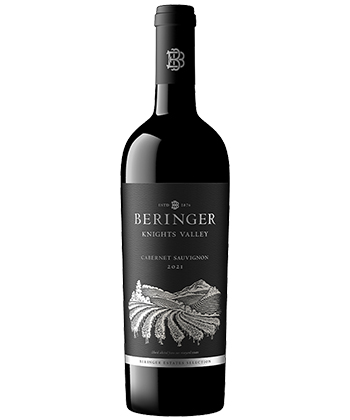
Beringer is part of the fabric of the Napa Valley. A pioneer in the industry, Jacob Beringer came to New York from Germany in the 19th century and heard about the soils of Napa and how they were similar to his home. Since then the family name has become synonymous with California wine. This Cabernet Sauvignon is a nice representation of the fruit grown in Knights Valley. It has a bright nose with subtle notes of roasted coffee beans and white pepper. The mouthfeel is wonderful with a tight fruit concentration that is restrained but full enough to match the vibrant acidity.
Average Price: $40
Rating: 94
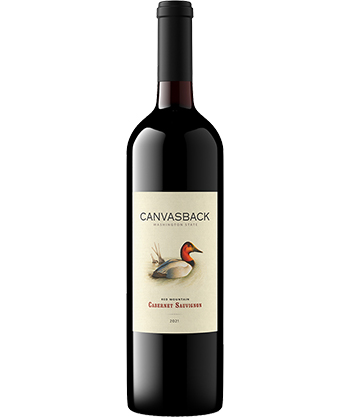
Canvasback is Duckhorn’s journey out of California. They saw the potential of Red Mountain in Washington State, and after plenty of research, began to make wines from the AVA. This wine is a great representation of the power and depth the variety can achieve here. It has a deep nose of roasted coffee beans mingling with black and red berry fruit along with a kiss of oak. The palate is soft with more depth and a tannin structure that adds a seamless mouthfeel to the wine.
Average Price: $44
Rating: 93
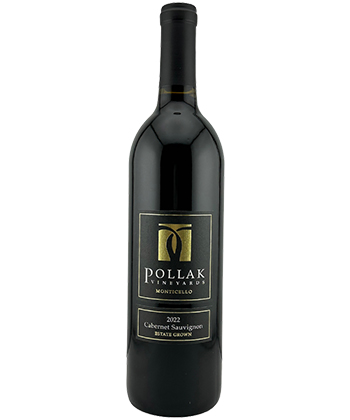
Margo and David Pollak made a name for themselves in the Carneros AVA of the Napa Valley, but saw a challenge in Virginia and made it their home. Making wine from this grape in the commonwealth comes with its hardships and it seems the Pollaks are up to the challenge. This wine shows the leaner side of Cab, with a subtle nose of wild berries, pepper, and spice. The palate has a medium weight and is well balanced with a good core of fruit and soft tannic edge.
Average Price: $45
Rating: 90
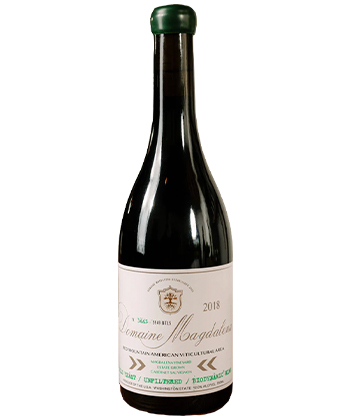
Winemaker Maggie Hedges’ approach to Cabernet Sauvignon is as unique as it gets. She biodynamically farms four acres of land in Washington’s Red Mountain AVA with her husband Christophe. The grapes are hand-harvested and fermented using all native yeasts, aged for 15 months in barrel, and bottled unfined and unfiltered. The result is one of the most distinct and versatile Cabs we’ve tasted. (FYI, she also makes a Cabernet Nouveau that is a must-try.) This soft, earthy wine has layered aromas of leather, cured tobacco leaf, hay, cooking herbs, and roasted vegetables. The palate is approachable with notes of blueberries and blackberries, but with a slight tannic edge. Unique, balanced, delicious.
Average Price: $48
Rating: 92
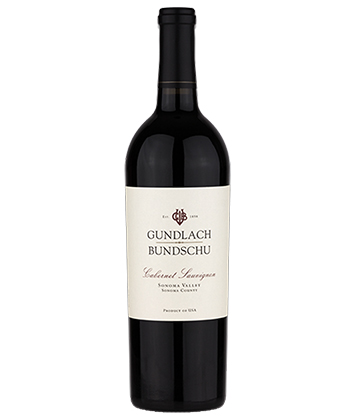
Gundlach Bundschu is one of the most important wineries in the history of Sonoma. Founded in 1858 by Jacob Gundlach and later joined by Charles Bundschu, it’s the second oldest winery in Sonoma County and it’s still family run. (They also have a sick music festival.) This wine shows that the legacy holds after all these years. The nose is meaty with flecks of pepper and earth. The palate has a very present tannic edge and great natural acidity as the fleshy fruit rises to match the leanness.
Average Price: $52
Rating: 93

In a world dominated by Cabernet Sauvignon, Markham has been making wine from Merlot since 1980. It was actually only the fourth winery in the valley to do so. They seem to take the Merlot approach to Cab as well. This is a wonderful, easy, plush wine with a soft nose of blackberries, earth, and a hint of oak. The mouthfeel is lifted with soft tannins and medium fruit.
Average Price: $53
Rating: 91
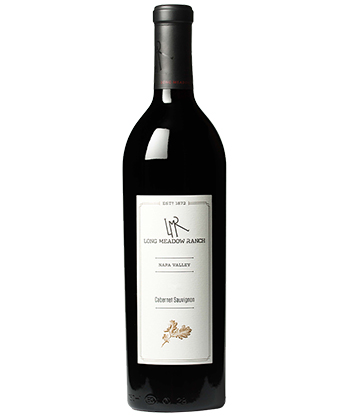
Long Meadow Ranch is one of the most exciting wineries in the Napa Valley. They have a large operation dedicated to quality and hospitality. They have Merlot that will make you fall in love with Merlot, and this Cabernet Sauvignon, a blend of mountain and valley fruit, is crafted so damn well that you will need a minute after one sip. The balance here is impeccable, with earth, pepper, and wild berry fruit aromas. The palate shows structure, depth, and power.
Average Price: $60
Rating: 96
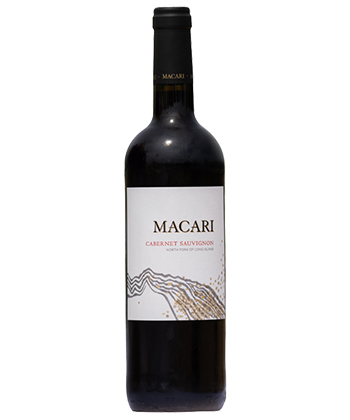
Macari is a leader in sustainable viticulture and winemaking on Long Island. It’s not easy to get the kind of depth we are used to in the U.S. for a Cab in this region, but Macari found the sweet spot. The nose shows the herbaceous side of Cab with wild berries, pepper, and dried herbs. The mouthfeel is pleasantly medium bodied but with enough fruit and depth to hold up to the tannin structure. Not all Cabs need to be big and bold. This shows us why.
Average Price: $60
Rating: 93
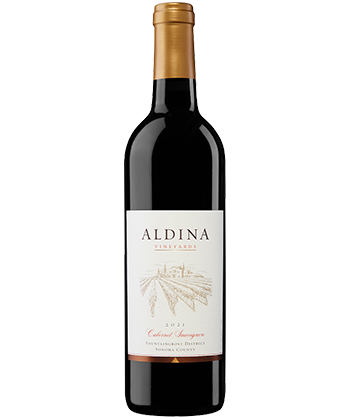
Aldina is an homage to Francisco and Monica Lopez’s parents Al and Dina Lopez. We loved their 2019 Cabernet Sauvignon and the 2021 shows they continue to kill it. From Sonoma’s Fountaingrove District, it has a nose of graphite and boysenberry with judicious oak. The palate is rich and peppery with complex savory notes.
Average Price: $72
Rating: 93

Clif Family Winery’s vineyards are organic and Napa Green certified, but the estate has been farming this way since the early ’90s. This Cab comes from the Oak Knoll District, an area tucked into the southern end of the Napa Valley where it benefits from a slightly cooler climate from the marine influences of the San Pablo Bay. It has a wonderful nose that screams Napa Cab with pepper, blackberry, and vanilla. The mouthfeel is focused and very balanced with youthful tannins and bright acidity.
Average Price: $85
Rating: 93
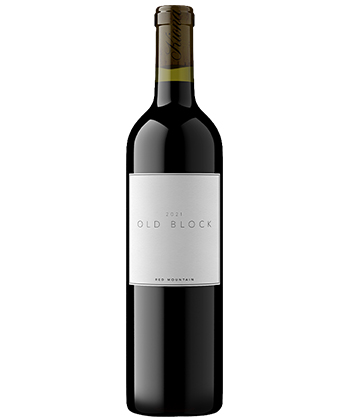
Kiona was the first to plant vines in Washington’s Red Mountain District in 1975, before there was even an AVA system (that came in the ’80s). At the time, Cabernet was not yet a proven winner in the region and founders John Williams and Jim Holmes only planted it to a third of their land, but today things have changed. Those vines are still there, and this wine is from those vines. The nose has aromas of fresh wild berries with a dose of leather, cured tobacco leaf, and pepper. There’s a nice grip on the palate with a rustic, subtle depth.
Average Price: $85
Rating: 93
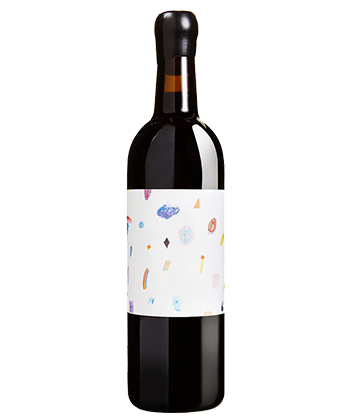
Las Jaras makes wines in a wide spectrum of styles, but each bottling reliably offers incredible verve and energy. For its Cabernet Sauvignon, Las Jaras wanted to emulate the easy, bright vibes of the ’70s style that put American wine on the global map, and it works. Sourced from Sonoma Mountain, this wine has a nose of herbs and brambles with a hint of anise. The palate has a slight grip with added notes of leather and cured tobacco leaf.
Average Price: $90
Rating: 93

Mark Davis left Maryland to pursue a dream of winemaking. He studied in California and went off around the world learning with a hands-on approach. When it was time to make his own wine, he wanted to give tribute to his parents, who supported him the entire way. His dad is a Cab fan so Davis made one and put a drawing of his father on the label. We absolutely loved the 2020 vintage of this wine and the 2021 does not disappoint. Deep red fruit with subtle pepper aromas wisping about on the nose. The palate is rich with great acidity to balance it out. The tannins are still working through the wine and you can just tell it’s going to age well.
Average Price: $110
Rating: 94
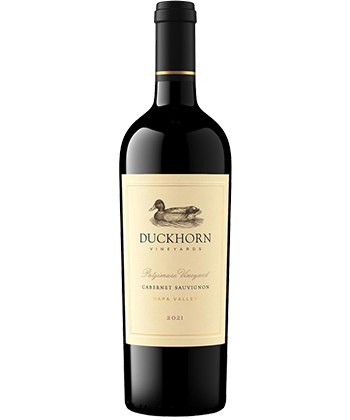
Duckhorn is part of the fabric of Napa Valley wine. And though the winery has grown extensively, it hasn’t forgotten its roots. This wine is from the Patzimaro Vineyard, which is named after a family that was part of the Duckhorn team and worked with this land. It starts off a bit shy, but as it opens, the wine peels off another layer every 15 minutes or so. The nose is subtle with hints of wild berries, earthy forest floor, and green pepper. The palate is seamless, a harmony of fruit and tannin existing in tandem. An absolutely beautiful wine.
Average Price: $110
Rating: 95
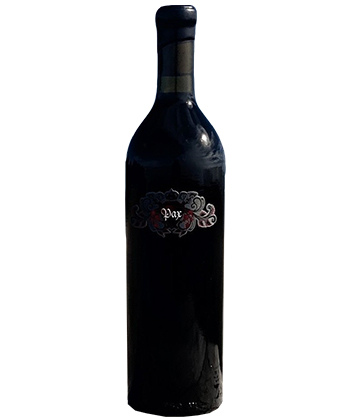
Pax is known for its stunning Syrah, but has also branched out into many different projects. This is an exciting one. The wine is another that attempts to emulate the past, this one aiming to evoke the stellar Cabs of the ’70s. And the vibe works. From the Fulton Lane vineyard in Napa’s St. Helena, this is a special wine with a nose of wild berry fruit and a slight hint of savory olives. The palate has a grip with a good amount of tannin to frame the juicy red plums and blackberries. So old school. Respect.
Average Price: $125
Rating: 91

Cathy Corison and her husband William Martin began their winemaking journey in the Napa Valley in the mid ’80s buying fruit from other vineyards. In the mid-’90s they bought land to plant their own vineyards and build their Victorian-style winery barn. For 35 vintages they have handcrafted their wines, and their love for wine shows in this wonderful and expressive Cabernet Sauvignon. The nose brings aromas of anise, wild berries, forest floor, and some flecks of pepper. Then the palate unveils flavors of juicy cherries and plums with hints of cocoa nibs, and spice. The mouthfeel is elegant yet powerful with unbelievable balance. A Cab from Napa that drinks like a Cab from Napa — but not the type of Cab from Napa you’re probably used to.
Average Price: $125
Rating: 94
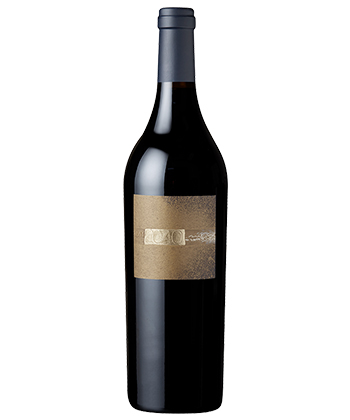
The vines that produced the fruit for this wine sit 2,040 feet above sea level on the highest block of the expansive Cooley Ranch in the western reaches of Sonoma County — hence the name of this bottling. Steep slopes, plenty of sun, and rocky soils force the vines to work a bit harder to produce fruit, resulting in good concentration in the grapes. The result is a wine with great character. The nose has hints of brambles, plums, and pepper. It’s also starting to show the tertiary characteristics that come from half a decade aging in the bottle. The palate is calm, as the tannins start to melt into the core of the wine.
Average Price: $125
Rating: 93
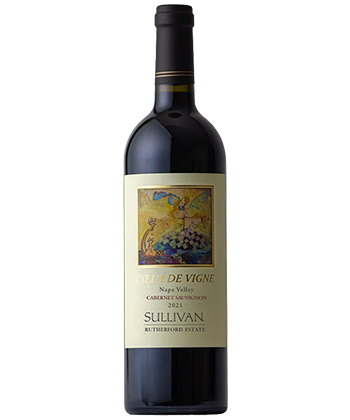
The legacy of Jim Sullivan thrives at his eponymous estate. This is a unique place in Napa. When the state was cutting up land with county lines, the border of the old parcels Rancho Carne Humana and Rancho Caymus ran right through the property. Today, Sullivan still resides on the dividing line. Named for the heart of the vine, this wine has a nose of graphite and blueberry jam with flecks of peppercorns. The palate is deep and wide with elegance. The wine is framed by subtle tannins that give it an epic balance.
Average Price: $130
Rating: 94
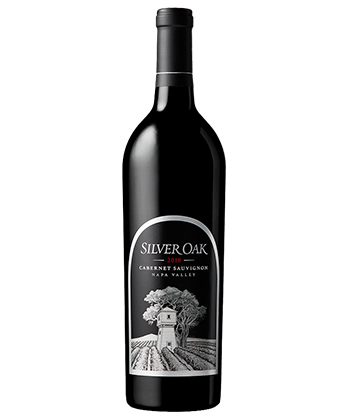
In 1977, the Duncan-Meyer winery was just starting out and the name just wasn’t hitting. They ended up naming it a hybrid of the location of their property halfway between the Silverado Trail and Oakville in the Napa Valley — and Silver Oak was born. Today the wine is a bit more expensive than in their early days selling wine for $6 a bottle, but the quality has only increased. This wine is leathery with wild berry fruit and a lingering note of tobacco leaf and cedar. It’s seamless on the palate, with a slight tannic grip around the edges.
Average Price: $180
Rating: 92
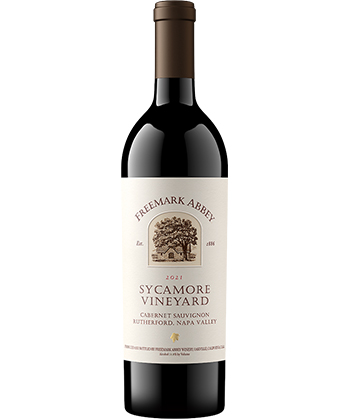
Napa Valley’s historic Freemark Abbey has been in business for over 100 years. Its wine was even included in the 1976 Judgement of Paris. This is a beautiful single-vineyard Cabernet Sauvignon with deep black and blue berry aromas and hints of dried herbs. The palate is as deep as a Napa Cab can go with subtle yet present tannins soaking into the core of fruit. It’s a young wine but it’s drinking wonderfully now.
Average Price: $200
Rating: 94
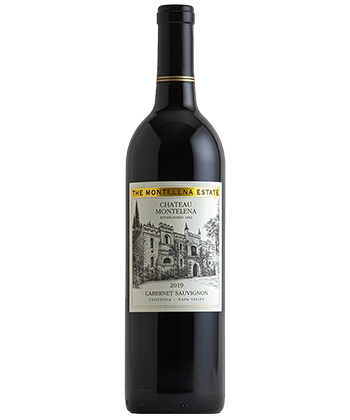
Chateau Montelena is one of the most famous estates in the Napa Valley, since the winery’s Chardonnay won the top prize in the 1976 Judgement of Paris. While it still makes stunning expressions of Chardonnay, this Cabernet Sauvignon is a study in the variety’s ability to offer elegance and depth. Blackberry and blueberry aromas pop on the nose with an earthy, umami tone that suggests mushrooms and forest floor. There are lithe tannins on the palate framing soft mouthfeel with medium weight.
Average Price: $200
Rating: 94
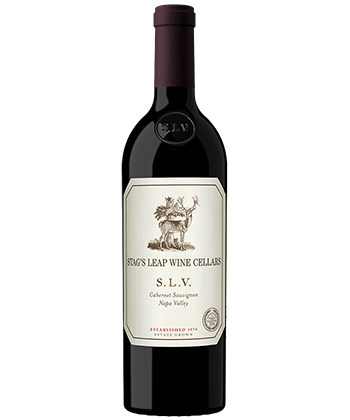
Since it took home the top prize at the Judgement of Paris in 1976, Stag’s Leap has been renowned for its S.L.V. Cabernet Sauvignon. And just like its fellow participants, like Chateau Montelena, the quality and balance, age-worthiness achieved in this wine is still stunning to this day. It’s a bottle that was among the first to define Napa wine. Wonderful blackberry and cassis aromas lie beneath savory notes of olives and pepper. The mouthfeel is full of texture and depth with a seamless yet present tannin structure framing the beautiful medium fruit.
Average Price: $250
Rating: 95
Cabernet Sauvignon originated in Bordeaux, France, where it is widely used in the prestigious blends of the Left Bank. DNA testing has shown that Cabernet Sauvignon is actually the product of a crossing between two other grapes that are popular in Bordeaux, Cabernet Franc and Sauvignon Blanc — hence the name Cabernet Sauvignon.
While Cabernet Sauvignon comes from France, where it is commonly used as a blending grape, most major wine regions have taken up this grape and made it their own. High-quality examples of Cabernet Sauvignon, both as varietal wines and in blends, can now be found across the globe from esteemed regions like the Napa Valley to Washington State, Australia, Chile, and South Africa. It is one of the world’s most common and popular varieties, also making it one of the most planted.
Cabernet Sauvignon put the Napa Valley, and the U.S. wine industry, on the map, and drinkers embraced it. The wine’s profile is bold, fruit-forward, and complex, making it a great choice for drinking on its own or with food. The familiar flavors of blackberry, plum, black currant, and vanilla make it an inviting wine that many enjoy, especially with a nice steak.
*Image retrieved from Matthew via stock.adobe.com
The article The 30 Best Cabernet Sauvignons for 2025 appeared first on VinePair.